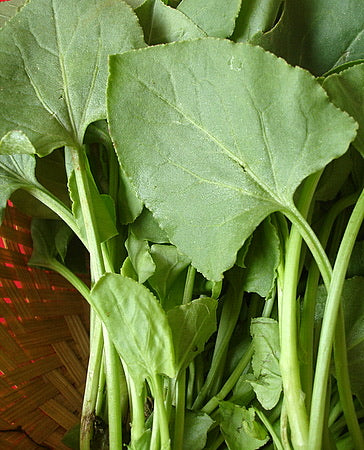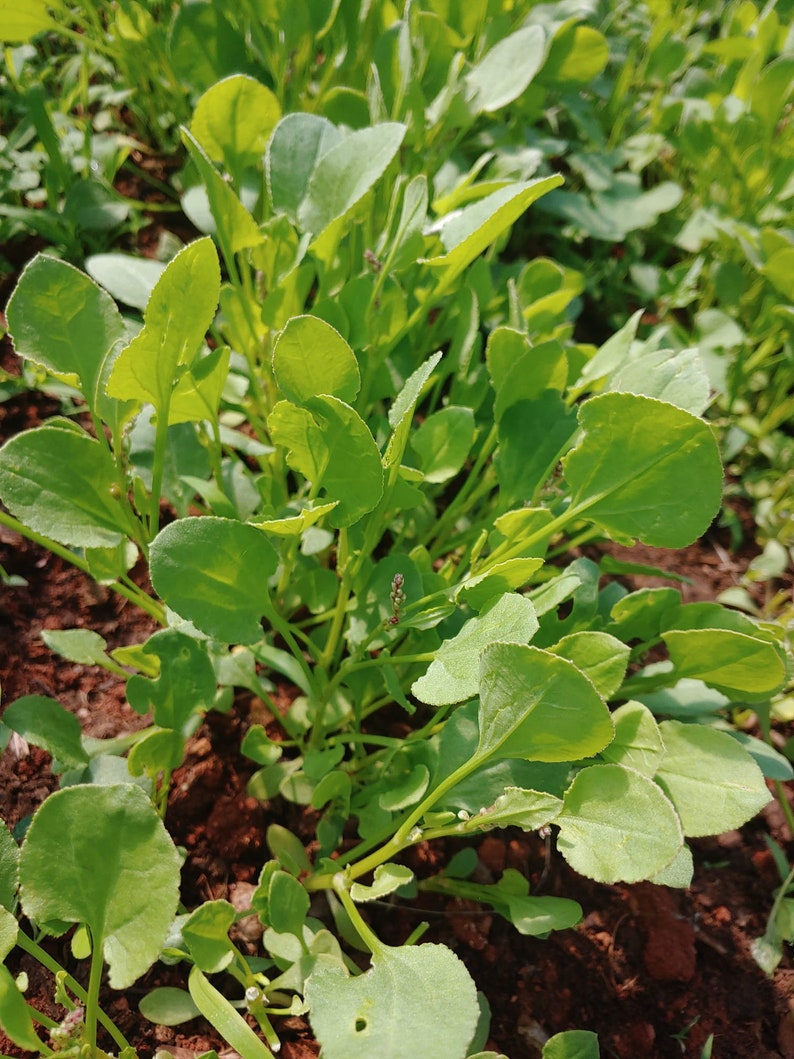Chukka Kura Plant: What It Is, Growing and Caring Tips
Chukka Kura, also known as ivy gourd or kowai fruit, is a fast-growing tropical vine crop cultivated for its edible fruits and leaves. Originating from India, it is a popular vegetable in many Southeast Asian and African countries.
Let's learn more about this unique plant and how to successfully grow it.

Key Features:
Scientific Name: Rumex acetosa
Alternative Names/English Names: spinach dock, khatta palak, Indian sorrel
Color: Dark green
Taste: Chukka Kura leaves have a slightly bitter and peppery taste, similar to mustard greens or arugula.
Height: The plant can grow up to 3 to 5 feet (0.9 to 1.5 meters) in height.
Spread: The plant has a moderate spread, typically around 1 to 2 feet (0.3 to 0.6 meters).
Maintenance: Chukka Kura is a relatively low-maintenance plant. It prefers well-drained soil and requires regular watering. It thrives in full sun or partial shade.
Hardiness Zone: The specific hardiness zone for Chukka Kura may vary, but it generally grows well in tropical and subtropical regions.
What is the Chukka Kura Plant?
The Chukka Kura plant, scientifically known as Rumex acetosa, is a perennial vine native to South Asia.
It is a member of the Polygonaceae family along with buckwheat and rhubarb.
Its fast-growing stems can reach lengths of over 20 feet as it climbs fences, trees, or other supports using small tendrils.
The leaves are dark green with an ivy-like shape, broad and thin in texture. In summer, it produces small white flowers followed by round, green to reddish fruits around 2-5 cm in size.
The tender fruits are eaten when young and taste tart, while the leaves have a sour, citrusy flavor.
Chukka Kura is cultivated for both its edible fruits and leaves. The tender fruits, when young, are a culinary delight with their tart taste.
They can be used in various dishes, such as stir-fries, curries, and pickles. The leaves, with their sour and citrusy flavor, are also edible and can be used in salads, soups, and other culinary preparations.
They are rich in nutrients, including vitamin C, calcium, magnesium, potassium, beta-carotene, and lutein.
Sowing Season:
Chukka Kura thrives when planted outdoors in spring or summer in tropical and subtropical regions.
Soil Requirements:
Choose a garden spot with sandy loam soil enriched with compost and a neutral pH of 6.0-7.0. Improve clay soils before planting.
Water Requirements:
Provide consistent moisture to established plants, watering deeply once a week so the top inch remains moist but not saturated.
Temperature:
Grows best where daily temperatures range from 20-30°C. Night temperatures above 12°C are ideal.
Pests and Diseases:
Monitor for aphids, slugs, leaf spot fungi or powdery mildew. Maintain air circulation and use organic pest controls as needed.
Growing Instructions:

Direct Soil Bedding:
- Choose a sunny spot with well-drained soil.
- Prepare the soil by removing weeds and debris and adding organic matter for improved fertility.
- Dig small holes, plant your seeds 1-2 inches (1.3 cm) deep and 12–14 cm apart.
- Water thoroughly after planting and keep the soil consistently moist throughout the growing season.
- Apply organic mulch around the plants to suppress weeds and conserve moisture.
- Regularly water and fertilize the plants, and harvest the leaves regularly to encourage new growth.
Potting Soil:
- Choose a pot with drainage holes that is at least 6 inches deep.
- Fill the pot with a well-draining potting soil mix, leaving about an inch of space at the top.
- Plant the Chukkakura seedling or young plant in the center of the pot, ensuring the crown is level with the soil surface.
- Gently firm the soil around the plant and water thoroughly.
- Place the pot in a sunny location, preferably receiving at least six hours of sunlight per day.
- Water the plant regularly, allowing the top inch of soil to dry out slightly between waterings.
- Fertilize the plant with a balanced fertilizer according to the manufacturer's instructions.
- Harvest the leaves regularly to promote new growth and maintain the plant's shape.
Remember to adjust the watering and care based on the specific needs of your Chukkakura plants and your local climate.
Plant Maintenance
Chukkakura requires one to two hours of sunlight. To keep the insects away, check the plants frequently and apply Panchagavya and neem oil sprays.
Every ten to fifteen days, add a handful ofcompost to ensure that the soil has adequate nutrients for plant growth.
Conclusion
Chukka Kura is a simple yet highly rewarding plant to grow. Though the vines take patience to mature, their productivity will supply you with nutrient-dense leaves and fruits all summer.
Resistant to most pests, Chukka Kura thrives with minimal care once established. If you want an abundant harvest of a superfood to enjoy in your meals, give this versatile vine a spot in your garden this season.
Its early sowing means you can still get started. Your family will appreciate both the flavors and health benefits.
Don't delay - get planting Chukka Kura today to experience the rewards of your own homegrown harvest!
